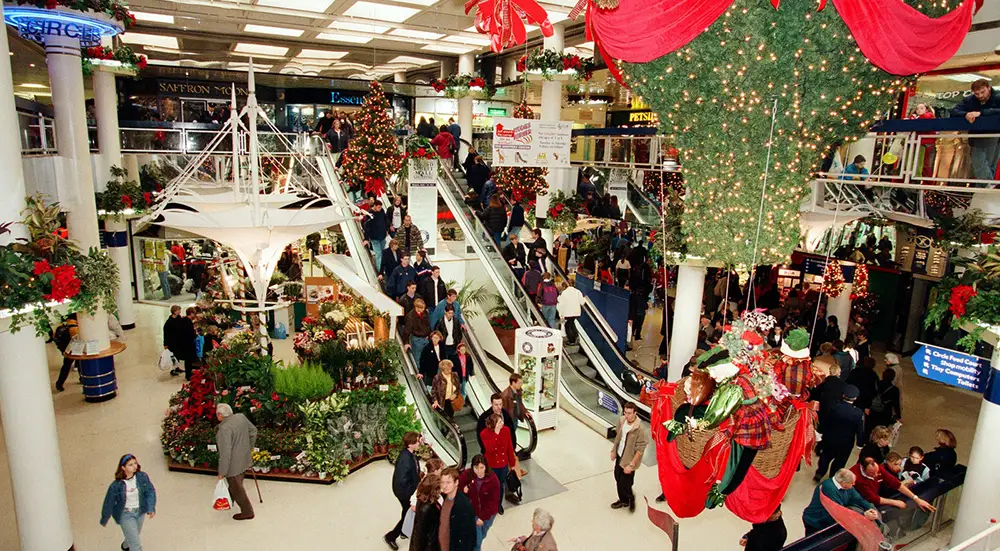
Stay Informed
Get the latest news, trends, and industry insights.
From factory "sick days" to the biggest retail event of the year—here's how Black Friday became a masterclass in cultural brand-building, and what your marketing strategy should learn from it.
When "Black Friday" Meant Actual Fraud
Let's start with the truth: Black Friday started as a mass employee scam. In the early 1950s, factory managers noticed a curious pattern. Workers mysteriously fell "ill" the day after Thanksgiving more than any other day of the year. The goal? A four-day weekend without burning vacation time. The name stuck, and "Black Friday" became shorthand for America's favorite unofficial holiday.
By the 1960s, retailers flipped the script. Instead of fighting the long weekend, they leaned into it. The term "Black Friday" was repurposed—no longer about absenteeism, but about profits. This was the day stores finally moved "into the black" after months of sluggish sales.
Meanwhile, police in Philadelphia were using "Black Friday" to describe the traffic nightmare and crowded streets that came with holiday shopping. Retailers didn't fight that narrative, they used it as social proof. Crowds = demand. Chaos = urgency. Scarcity sells.
Sound familiar? It should. Modern marketers are still using the same playbook.
Cars, Highways, and the Birth of Destination Shopping
The late 1950s brought the Interstate Highway System and the rise of car culture. Families could travel farther, faster. Thanksgiving became a road trip holiday—people visiting relatives in new cities, staying the long weekend, and (here's the kicker) shopping while they were there.
Local retailers saw it first: out-of-towners with time to kill and wallets ready to open. But how do you capture that traffic when you're not their usual store?
Retailers flooded Friday morning papers with exclusive deals and "doorbuster" offers, strategically timed for travelers waking up in unfamiliar towns. It was hyper-local advertising at scale—targeted, timely, and irresistible.
This is omnichannel marketing before we had a term for it. Retailers met customers where they were (literally) and made it impossible to ignore.
Lesson for today's marketers: Your audience is mobile. Your strategy better be, too. Whether it's geo-targeted ads, email campaigns, or influencer takeovers in key markets, strategic digital campaigns win when they're contextual, not just loud.
The 1970s–1990s: When Black Friday Became a Brand
By the 1970s, Black Friday had evolved from opportunistic sales into a branded event. Department stores opened earlier. Deals got deeper. The competition got fiercer.
This was experience design. Consumers began expecting Black Friday. They planned around it. Talked about it. Lined up for it. Retailers had successfully turned shopping into an event worth sacrificing sleep for.
That's the power of ownable moments. Black Friday was built through consistent messaging, strategic timing, and creating a sense of urgency and exclusivity that became cultural currency.
Does your brand have a moment like that? An annual campaign, a signature product drop, a tradition customers anticipate? If not, you're leaving money (and brand loyalty) on the table. Brand strategy isn't just logos and taglines—it's creating reasons for customers to show up, year after year.
The Internet Changed Everything (Obviously)
Then came the '90s and early 2000s, and with it: the slow death of the mall and the rise of e-commerce.
Suddenly, the Friday morning circular wasn't enough. Foot traffic was down. Online competition was up. Door busters? Replaced by limited-edition drops, VIP early access, and email countdown timers.
Retailers that survived (and thrived) did one thing right: they adapted their channel strategy without losing their brand.
Today's Black Friday looks nothing like the original. Sales start on Thanksgiving (or earlier). They stretch through Cyber Monday. Email inboxes explode. Social ads retarget you within an inch of your sanity. And it works because brands learned to meet customers where they are: online, on mobile, scrolling at 11 PM on a couch.
Modern Black Friday is a digital experience, and if your brand isn't optimized for it, you're toast. That means:
- Email sequences that convert (not just blast and pray)
- Paid social that doesn't feel like spam (creative that actually stops the scroll)
- A website that can handle traffic (because a slow site is a dead sale)
- Retargeting strategies that close the loop (because most people don't buy on the first visit)
This is where integrated marketing campaigns come in. You can't just "turn on" Black Friday. You build toward it: brand positioning, audience segmentation, creative assets, and a tech stack that doesn't crumble under pressure.
What Marketers Can Learn From Black Friday's Evolution
Let's cut to it. Here's what Black Friday teaches us about building brands that actually move the needle:
1. Own the Narrative (Even If You Didn't Start It)
Black Friday went from "employee scam" to "retail goldmine" because someone decided to rebrand it. Your product, service, or industry might have baggage, reframe it. Control the story before someone else does.
2. Create Urgency Without Desperation
Scarcity works. FOMO works. But only if your brand has the substance to back it up. Limited-time offers are great; a limited-value brand is not. Brand positioning is how you make sure your "deals" don't cheapen your identity.
3. Go Where Your Audience Is (Not Where You Wish They Were)
In the '60s, it was newspaper circulars. In the 2000s, it was email. Today, it's TikTok, Instagram, influencer partnerships, and SMS. Don't cling to tactics because they "used to work." Meet your customer where they're scrolling, shopping, and ready to buy.
4. Turn Transactions Into Traditions
Black Friday isn't just a sale—it's a ritual. People plan for it. Brands that win long-term don't just chase one-off purchases; they build experiences people come back to. That's the difference between a campaign and a brand strategy that compounds year over year.
5. Adapt or Die
Malls didn't kill Black Friday. The Internet didn't kill Black Friday. Brands that refused to evolve? They're gone. Digital transformation isn't a buzzword—it's survival.
So, What's Your Black Friday?
You don't need to be a retailer to learn from this. Every brand has an opportunity to create a moment, own a narrative, and build something customers actually anticipate.
Maybe it's an annual product launch. Maybe it's a limited-edition collaboration. Maybe it's a signature campaign that becomes synonymous with your brand.
But it doesn't happen by accident. It takes strategy. Positioning. Creative that cuts through. And a team that knows how to turn an idea into a movement.
Ready to build something bigger than a sale?
Let's talk strategy. Whether it's naming, brand identity, creative, digital campaigns that convert, or ownable brand positioning, we've helped brands go from "just another company" to unforgettable.
👉 Let's build your brand's biggest moment.
P.S. — If your Black Friday strategy is "send a discount email and hope," we need to talk. Seriously.
Stay Informed




